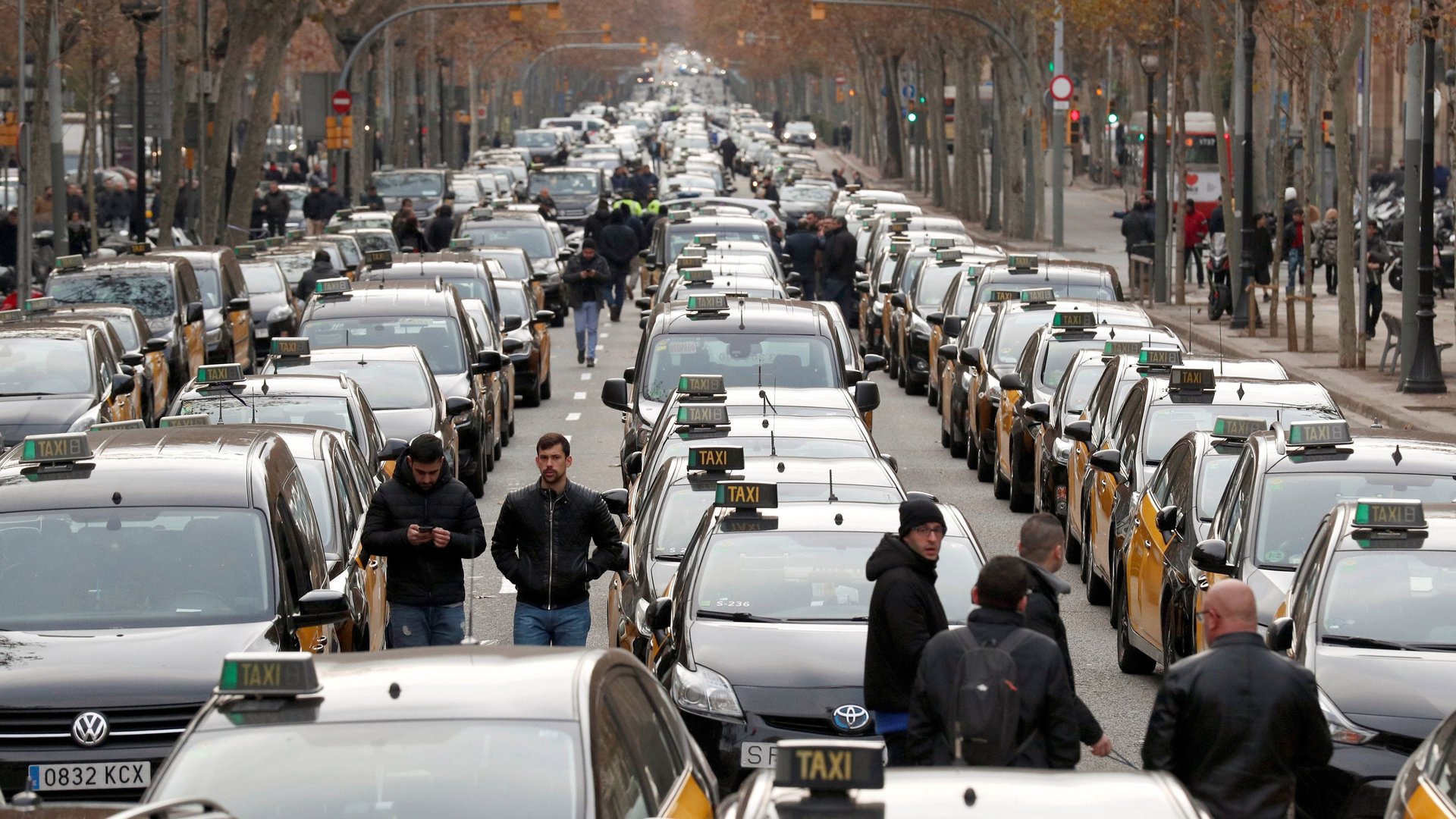Lyft is no better than Uber
Ahead of its initial public offering, Lyft is done playing nice.


Ahead of its initial public offering, Lyft is done playing nice.
Lyft and competitor Juno each filed lawsuits against New York City on Jan. 30 in an attempt to thwart rules that will raise driver wages. Under legislation passed by the city in December 2018 and scheduled to take effect on Feb. 1, ride-hail companies must pay drivers at least $17.22 an hour after expenses. The pay formula uses a so-called utilization rate, which accounts for the share of time a driver spends completing rides compared to time spent idle and waiting for a fare.
In its complaint, Lyft called the new pay rule “the product of arbitrary and capricious rulemaking” and argued it would fail to raise driver wages by depressing customer demand. Juno described the rule as “inherently flawed and fundamentally unfair” and alleged it would “destroy competition in the New York City market.” Lyft spokesman Adrian Durbin said in an emailed statement the pay standard would “advantage Uber in New York City at the expense of drivers and smaller players such as Lyft.”
Uber, which did not file a lawsuit, declined to comment.
New York City was the first in the country to enact rules aimed at improving the welfare of ride-hail drivers. The $17.22-an-hour standard is designed to pay drivers, who are independent contractors, the city minimum of $15 an hour after accounting for benefits like paid time off.
Drivers in the city earn less than $17.22 an hour on 73% of ride-hail trips, according to research compiled by the local taxi commission. The median Uber and Lyft driver earns barely more than $13 an hour after expenses. The new pay rules are expected to boost earnings after expenses by $9,600 a year, or 45%, for the typical driver. That represents an aggregate annual raise of $626 million for all drivers in the city.
There’s a deep irony to Lyft and Juno moving to block the new pay standard. Both companies market themselves as driver-friendly, in implied contrast to Uber. Juno, which launched in New York in early 2016, explicitly said it would treat drivers better than Uber. Uber spent years aggressively cutting prices, to the detriment of drivers. It only added a tipping option to its app in mid-2017, while Lyft offered tips from the very beginning. Suing a local government to protest an inconvenient rule or regulation—such as the lawsuit Uber filed against Seattle over a law allowing drivers to unionize—was also a quintessential Uber move.
Lyft, the consummate nice-guy company, used to prefer to keep a low profile. But Lyft isn’t looking so nice anymore.
“The idea that this lawsuit is about anything other than avoiding paying drivers a fair wage is laughable,” Jim Conigliaro, founder of driver advocacy group the Independent Drivers Guild, said in an emailed statement. “Lyft has had every opportunity to pay a livable wage and they refused to do so.”
“Shame on Lyft and Juno,” said Bhairavi Desai, executive director of the New York Taxi Worker’s Alliance.
A judge ruled late on Jan. 30 that Juno and Lyft had the option of putting any additional wages required by the pay formula into an escrow account, which they could get back if they won their cases. The companies are due back in court on March 18.
Lyft and Juno are right that they stand to hurt more than Uber from the new pay standard. But to steal a favorite phrase from the tech industry, that is a feature, not a bug, of how the rules are designed.
The pay formula has two purposes: 1) to increase driver pay and 2) to reduce congestion. The formula does this neatly by tying driver earnings to how busy they are. If drivers aren’t getting enough work from a ride-hail app, then the company is required to boost per-mile and per-minute rates to compensate. That should discourage companies from having idle drivers on the road, which in turn should reduce congestion on city streets.
Why would Juno and Lyft dislike this? Well, they currently have the two worst utilization rates in the industry. From February through June 2018, Juno had a utilization rate of 53% and Lyft of 56%, where that rate equaled total idle time divided by total time logged into an app (idle time plus time on a trip). In other words, their drivers trawled the streets for passengers in empty cars almost half the time. Uber’s rate was 58%, and Via’s the best at 69%.
For the first 12 months, the taxi commission has asked ride-hail companies to comply (pdf) with an industry-wide utilization rate of 58%. As Uber is by far the biggest ride-hail company, it also effectively determines the industry rate. Companies can petition the taxi commission to use a company-specific rate. Via, which has a better utilization rate than Uber, chose to do this. After the first year, however, that could change.
That’s exactly the point. Seasoned ride-hail drivers have spent years chasing busy hours and capricious bonuses from ride-hail companies. They know firsthand what happens when a company overpromises and under-delivers on fares. The taxi commission rules are designed to take the burden of staying busy enough to make a living away from drivers and put it back onto companies, where it should have been all along.